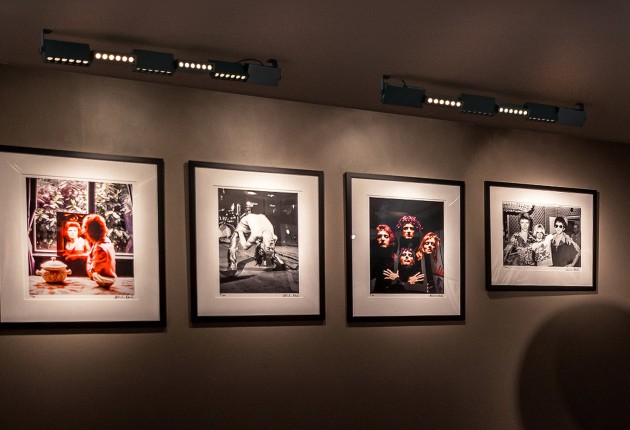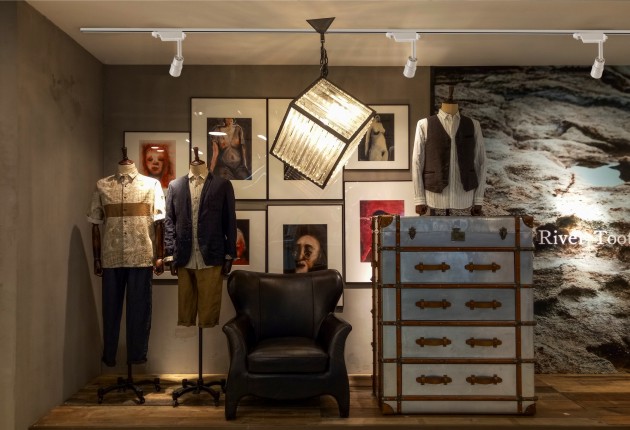Lighting is the soul of a space. Under the refined living needs, people's demands for lighting have risen from simply illuminating the environment to creating an atmosphere. People are now pursuing a more personalized and comfortable lighting environment. They carefully choose luxurious large chandeliers, but unknowingly, a thick layer of dust accumulates on them. Obviously, the design of lighting without a dominant light source has become the mainstream of home lighting design! Many people's pursuit of residential lighting only stays at the level of brightness. Moreover, due to seeing the design of lighting without a dominant light source in various places, they want to follow the trend. However, due to their own lack of professionalism and the inadequate aesthetic sense of some designers, the final effect achieved is even worse than that of ceiling lights.
In fact, there's no need to blindly follow the trend of lighting without a dominant light source. Having a dominant light source isn't necessarily bad. The beauty of lighting fixtures can't be replaced by downlights and spotlights.

Why is it said that the results of many unprofessional designs of lighting without a dominant light source are not as good as those of ceiling lights?
1. It's actually quite simple to light up your home with downlights and spotlights. Just arrange them evenly, and this is also the so-called lighting design without a dominant light source that we often see. However, this approach can hardly be regarded as a real design. There's a common saying: put one in the middle and several evenly around it. Anyone can do this. There's no need for a designer, or rather, everyone can be a designer. It's easy to illuminate but difficult to do it well.
2. When arranging them evenly, whether it's downlights or spotlights, their anti-glare effect is only within a certain range. It's impossible to achieve anti-glare from all angles. The overall effect is not as good as that of a ceiling light in terms of anti-glare, and it's also not as simple as a ceiling light. (In terms of residential housing).
3. Lighting design is not just about the design without a dominant light source. In hotels, except for executive suites and presidential suites, most rooms basically adopt the design without a dominant light source. Of course, hotels like The Ritz-Carlton belong to other styles and are not included in the above. A good lighting design uses various luminous objects to enhance the style of a space and create a proper light environment for the space. In other words, it makes people feel more comfortable.
4. A good lighting design not only beautifies the space but also makes people feel happy and has a certain connection with people's physiology.
Three Levels of Lighting
1. Just use light to illuminate the entire space.
2. In the space, the areas that should be bright are bright while those that shouldn't be remain dim, making people feel comfortable.
3. Artistic conception: Use light to create an artistic expression for the space.
Detailed Explanation of Point 1
One kind of fully lit design without a dominant light source involves arranging lights in a truly absolutely even and dense manner, achieving a state where there are no dark areas in the home at all. As shown in the picture below.

This kind of density makes people feel as if they were in the Great Hall of the People. But is it really necessary to be like this at home? Is its comfort really better than that of ceiling lights?
Many users hope that their homes can be a bit brighter. According to analysis, it's because the ceiling lights used in old houses in the past had light decay. To put it simply, they aged and then the total amount of light emitted became less, making people feel it was too dim, so they hope their homes can be brighter.
Although it's bright in this way, in many places, people will feel the glare from the lamps above due to the line of sight, because they are arranged too densely. If ceiling lights were used instead, the home would also be bright. However, the brightest part would surely be the luminous light source, with a gradual transition from bright to less bright.
The so-called beauty of light and shadow for a sense of luxury doesn't mean the shadow is pitch black. Instead, its brightness is lower than that of the surroundings. And compared with this so-called no-main-light design, the comfort has been improved a lot.
Many so-called no-main-light designs blindly pursue the use of spotlights and don't want any other light fixtures at all, such as table lamps, floor lamps, and dining table chandeliers. However, a good lighting environment is originally a combination mode. Only when various luminous bodies work together can a good environment be created.
The light of spotlights has strong directivity and is not soft enough, while light fixtures like floor lamps and table lamps are different. They are in a mode of uniform light emission. This kind of light has no directivity to speak of, but it is one of the indispensable elements for creating a warm lighting environment in a space. It's also for the above reasons that the lighting environment in many people's homes can never be as good as that in high-end hotel rooms (many old hotels don't have lighting design, while almost all newly opened ones do. Of course, here it only refers to high-end hotels).
The following two pictures are from other people's Weibo.

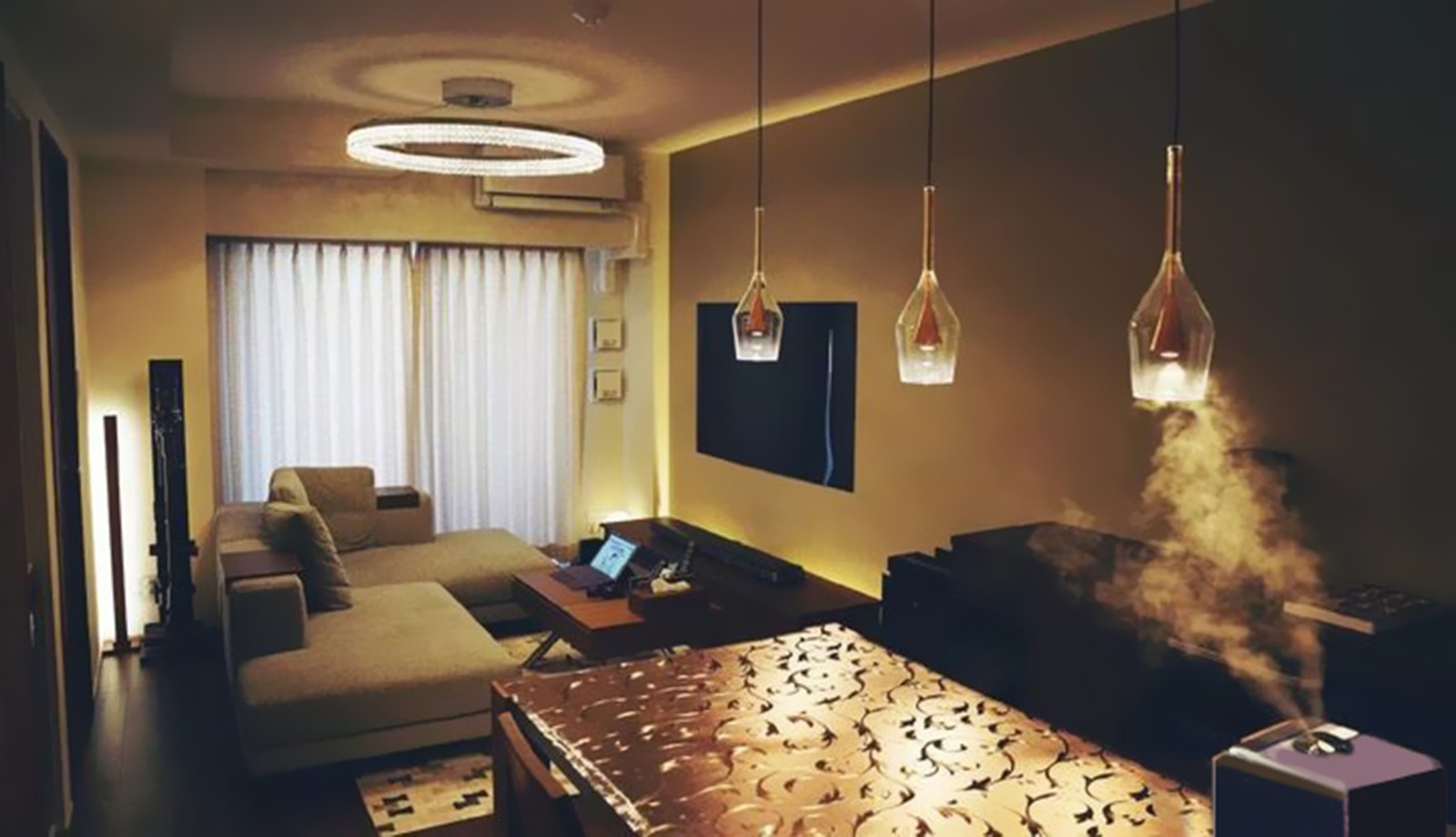
It's clear at a glance which one is more warm and cozy. The first way of uniform arrangement is to arrange the lamps uniformly without considering the objects to be illuminated in the space and simply detached from the attributes of the space. This wrong method is also very common. See the picture below.
 As shown in the picture, if we remove all the things in this space, we will find that the designer simply distributes the lamps evenly in this space. Then here comes the question. Since the lamps are not above the sink, when people are washing things, there will be the problem of light being blocked. How can this be solved? This kind of practice is all too common.
As shown in the picture, if we remove all the things in this space, we will find that the designer simply distributes the lamps evenly in this space. Then here comes the question. Since the lamps are not above the sink, when people are washing things, there will be the problem of light being blocked. How can this be solved? This kind of practice is all too common.
Look at this one. With the uniform arrangement, there is a lamp above the sofa. It surely looks nice when taking pictures of the sofa. However, when people sit on it, they may not feel very comfortable. In the photos of furniture stores, spotlights are used to illuminate the items for the purpose of selling, making people think it looks luxurious. But for objects like sofas and beds in residences, we use them more often than just taking pictures to show off.
For both of the above situations, it is recommended to use ceiling lights instead and then match them with some floor lamps and small table lamps. The effect will be very good. On the premise that the ceiling lights should not be too bright. Don't try to light up the whole space with just one lamp. Even if it does light up the whole space, the space will become extremely dull and uninteresting.
Meanwhile, one point that needs attention is that in many homes, due to the pipes, a border ceiling will be installed, but people will also habitually install downlights or spotlights. The use of lights must be reasonable and logical. In the case of having ceiling lights, these lights don't make any sense. Moreover, because they are too close to the wall, ugly light spots will be produced.
Detailed elaboration on item 2:
Many people's understanding of the concept of no-main-light design just stays on some photos on the Internet. Even some people who have decorated two houses themselves dare to claim online that they understand what no-main-light design is. The reason why people think the pictures they post look nice and give a sense of luxury is that the photos have a strong sense of light and shadow. From some perspectives, it's correct. But how to do it well is a huge conceptual system and it's hard to explain in just a few sentences. So I don't plan to talk too much about it here.
The first point that needs attention is that it is essential to match appropriate light fixtures. The light in a space with only spotlights is harsh. The focusing ability of the spotlight's light is relatively strong. When people stay in an environment with too much contrast between light and shadow for a long time, the fatigue level of their eyes will increase rapidly. This is extremely unreasonable in residential lighting.
The second point that needs attention is that I've found that many so-called no-main-light designers will use spotlights to illuminate the wall as long as there is a wall. Residential lighting must be restrained, must be restrained. It shouldn't cover every aspect.
The third point that needs attention is that I've found that for many so-called no-main-light designs, as far as the living room is concerned, several lights are first placed right above the coffee table just for decoration. I didn't understand why many designers liked to use them like this at first. But one day I realized it. I guess their logic is roughly like this (in previous designs, there was a main light, and the main light usually had a high wattage. Then some designers think that if there is no main light in the middle, then I'll replace it with several spotlights to reach the same wattage, so this situation is created. Here comes the problem. Replacement is not as simple as 1 + 1 = 2. The light of the main light emits in almost all directions, but spotlights all shine downward. This is the biggest difference between the two. So this point must be understood. It's very important).
The fourth point that needs attention is that many people blindly pursue that damn no-main-light design and fill all spaces with spotlights. This is also an extremely wrong practice. The anti-glare function of spotlights is only effective within a certain range. It can't prevent glare from any angle. Meanwhile, the elderly are more likely to feel glare than adults. For the elderly, this is wrong. Using only spotlights in the elderly's room may make the photos look nice and be good for showing off on apps like Zhuzhu, but for the elderly, the experience is extremely bad.

The fifth point that needs attention is that many interior designers like to use lights to create shapes, for example, putting three or four lights together and so on. However, from my personal perspective, I care more about the quality of light. The first thing I will consider is whether I need so much total light here. If so, I can consider using a spotlight with a slightly higher wattage, and one spotlight can solve the problem. There is no need to increase meaningless costs. Some also like to use surface-mounted lights to create shapes. Sometimes I wonder whether these meaningless lights should simply not be connected to the power supply and be used as pure decorations in residences.
The sixth point that needs attention is that when using lights, we are using their light. We can't limit our thinking to floor plans. We need to consider the state that the light presents in the space after the light is turned on. Once we are restricted by floor plans, there won't be a good lighting environment.
The seventh point that needs attention is the phototaxis of the human eye. In short, people will look at where it's bright. It's precisely for these reasons that we mustn't use meaningless lights. In residences, light is a supporting role, not the main element. Light is used for illumination, highlighting and so on. It's like the green leaves, not the flower. Once light becomes the main element, the design plan fails.
The fifth point that needs attention is that many interior designers like to use lights to create shapes, for example, putting three or four lights together and so on. However, from my personal perspective, I care more about the quality of light. The first thing I will consider is whether I need so much total light here. If so, I can consider using a spotlight with a slightly higher wattage, and one spotlight can solve the problem. There is no need to increase meaningless costs. Some also like to use surface-mounted lights to create shapes. Sometimes I wonder whether these meaningless lights should simply not be connected to the power supply and be used as pure decorations in residences.
The sixth point that needs attention is that when using lights, we are using their light. We can't limit our thinking to floor plans. We need to consider the state that the light presents in the space after the light is turned on. Once we are restricted by floor plans, there won't be a good lighting environment.
The seventh point that needs attention is the phototaxis of the human eye. In short, people will look at where it's bright. It's precisely for these reasons that we mustn't use meaningless lights. In residences, light is a supporting role, not the main element. Light is used for illumination, highlighting and so on. It's like the green leaves, not the flower. Once light becomes the main element, the design plan fails.
Detailed elaboration on item 3:
It's very difficult to convey an impressionistic style. When you understand what I mean by this sentence, you'll be able to create a good small space. The larger the space is, the more it requires something intangible like artistic conception. However, this also has a certain connection with one's own aesthetics. It can't be described in just a few simple words.
When using lights, restraint is necessary.
In fact, many people have been constantly worried that the space isn't bright enough, so they install lights densely. Although it becomes bright, there's nothing remarkable about it and the space is rather ordinary. It doesn't arouse any emotional fluctuations in people. Such a space is somewhat similar to the scenes in hospitals, meeting rooms or lecture halls.
A good lighting environment is always a combination of multiple light sources. I think that no matter how much I say, some people still won't be able to understand. Please look at the following pictures.
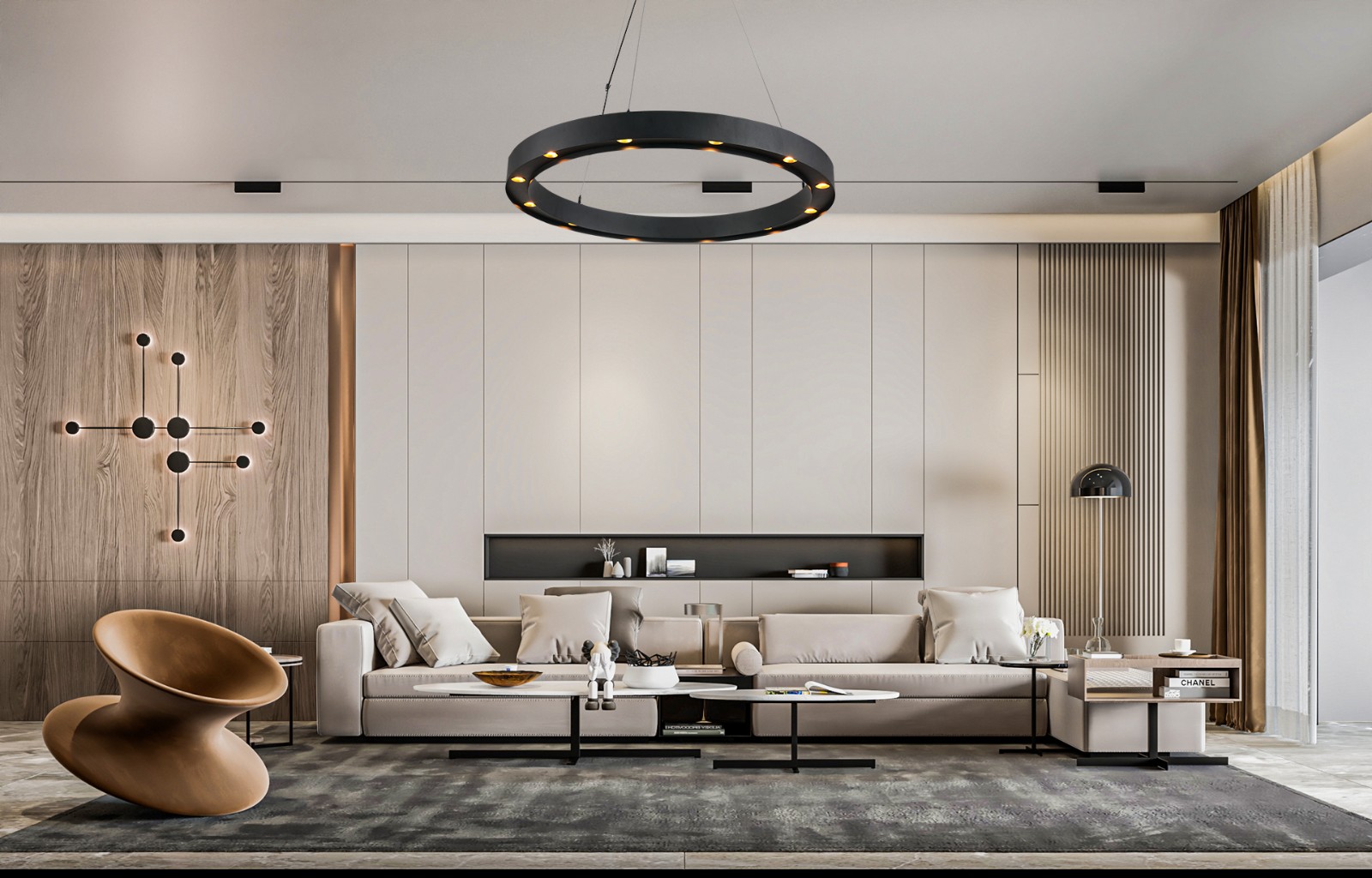
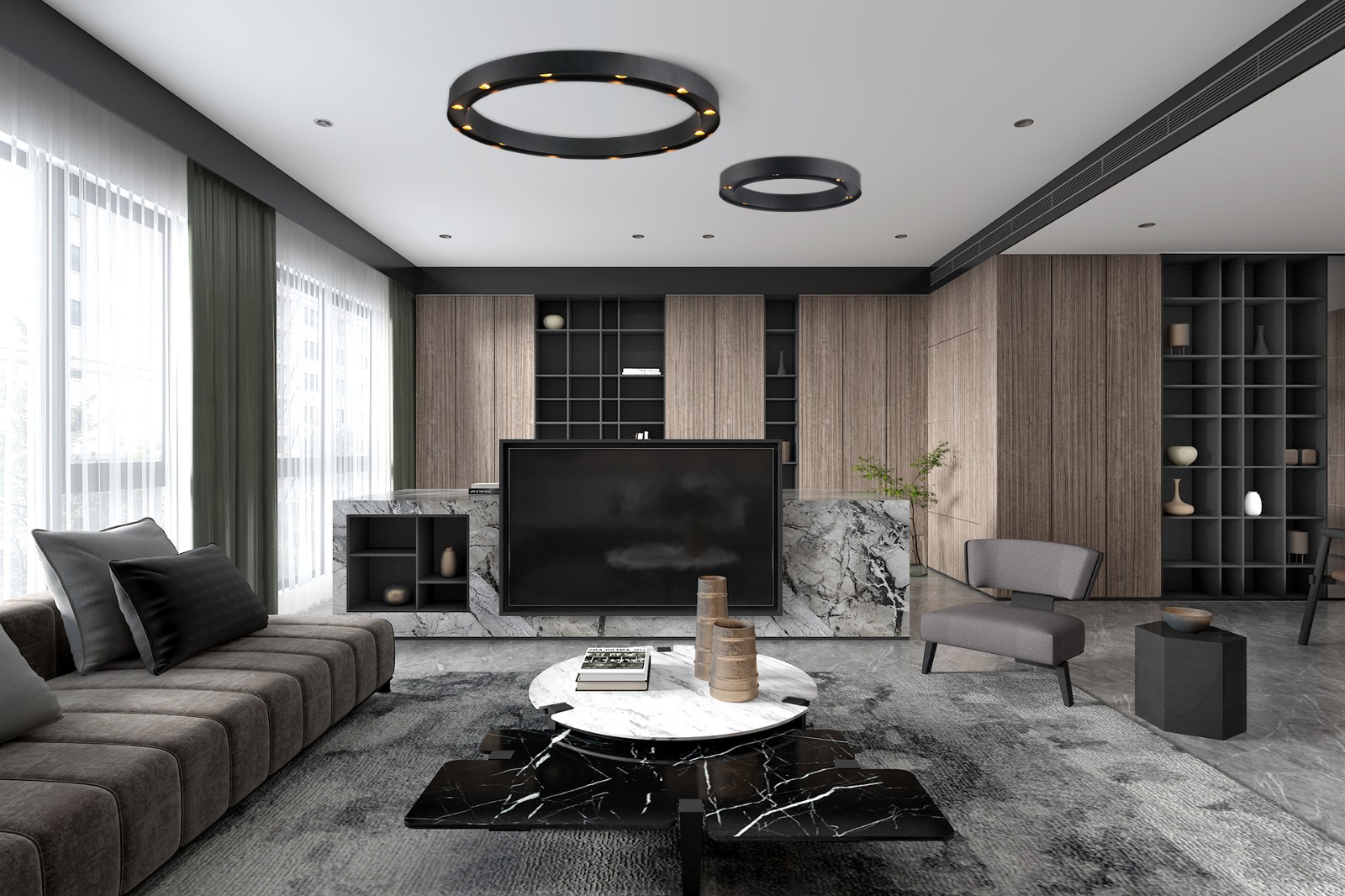
For example, when various light sources are combined together like this, a sense of atmosphere, a sense of luxury and a sense of comfort can be created. If on this basis, several spotlights are evenly arranged additionally, it's only necessary to design the circuit in this way when the space is a public space that requires a very bright lighting environment. Usually, for activities like resting and watching TV at home, this is enough.



